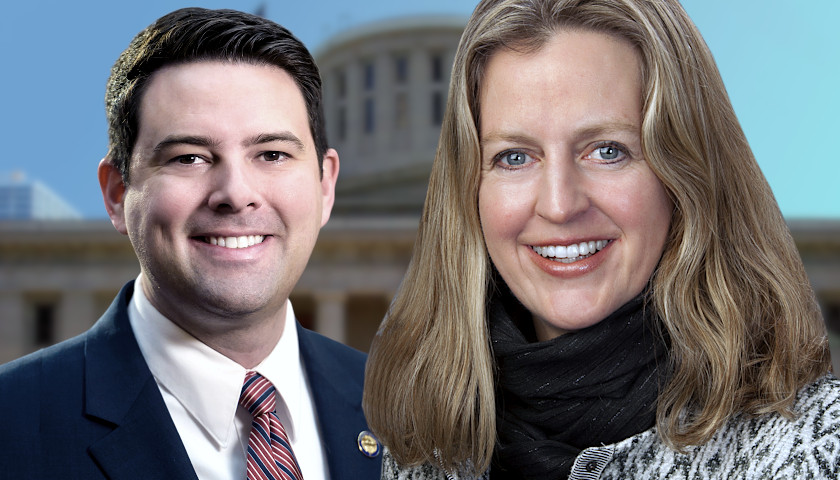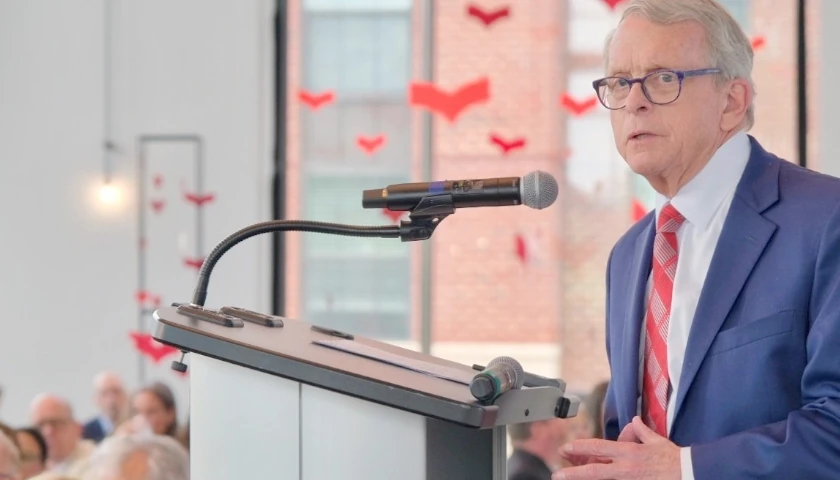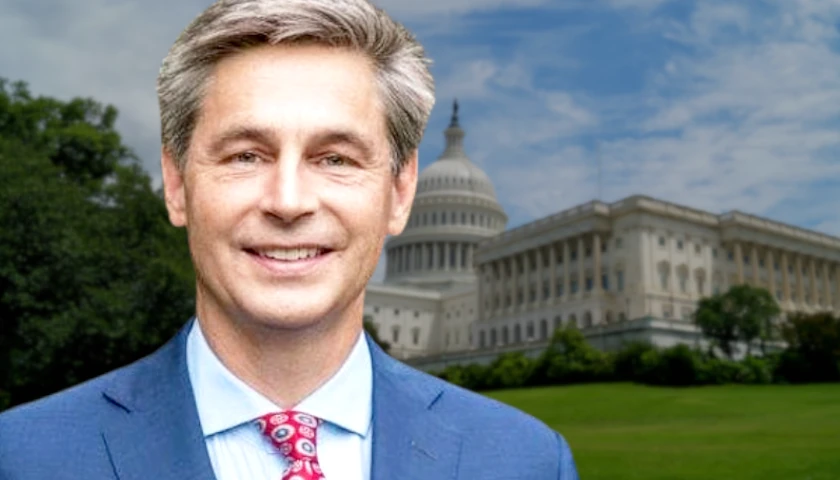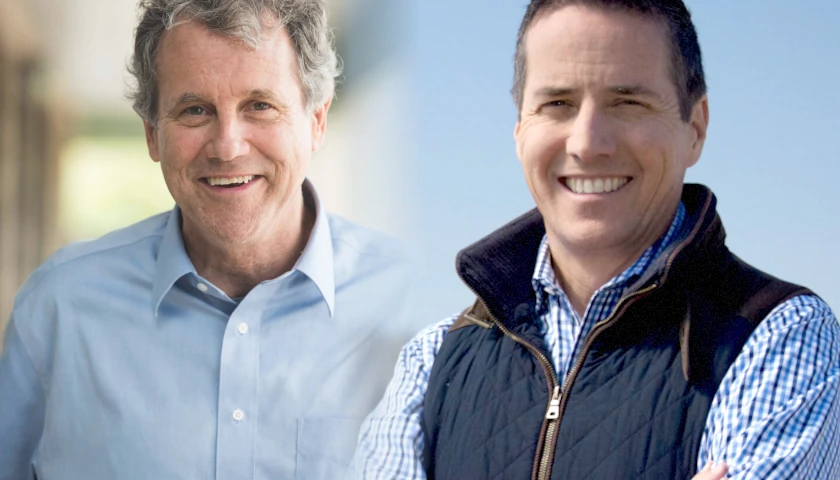The Ohio House of Representatives passed a bill Thursday that originated in the Ohio Senate – Senate Bill 311 (SB311) – by a vote of 58 – “yea,” 30 – “nay,” with 11 representatives not voting.
SB311 limits the Ohio Department of Health Director’s order-issuing authority and was sent to Governor DeWine’s desk – he has already vowed to veto the bill.
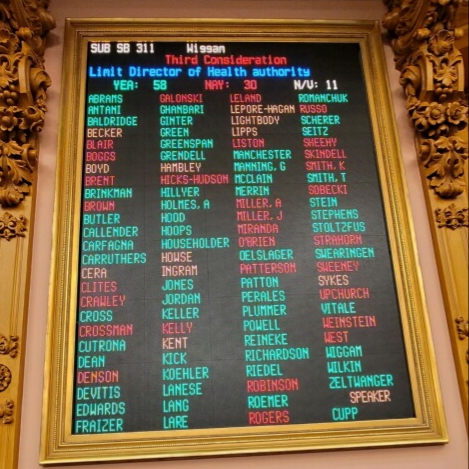 However, according to Ohio state Representative Jon Cross (R-Kenton) in an interview with The Ohio Star “there were three members quarantined who will vote for the bill – it needs 60 votes for a veto-proof supermajority and we will have 61.”
However, according to Ohio state Representative Jon Cross (R-Kenton) in an interview with The Ohio Star “there were three members quarantined who will vote for the bill – it needs 60 votes for a veto-proof supermajority and we will have 61.”
The bill passed the state Senate on September 23 with the exact number of votes needed (20) to override a DeWine veto – the final tally was 20 in favor, 13 against.
SB311 proposed loosening pandemic powers since its drafting by Senators Rob McColley (R-01) and Kristina Roegner (R-27) back in May. The bill was in the Health, Human Services and Medicaid Committee for two hearings where it stalled during summer recess but gained momentum during the fall session.
“Senate Bill 311 restores the voice of millions of Ohioans when it comes to decisions regarding health orders,” said Roegner.
DeWine took verbal swipes at the bill during a Thursday COVID briefing attended by The Star, calling the legislation a “disaster,” and then delivering several anecdotes against the bill.
McColley pointed out the flaw in DeWine’s anecdotal logic, taking to Twitter during the governor’s assault on the bill that a super-majority of senators approved.
This is not true. Such an order would be neither general, statewide or regional, but would rather be enforced specifically against a limited number of individuals based upon where they came from and not solely upon where they were then located. https://t.co/Ebn2EbS1D3
— Senator Rob McColley (@Rob_McColley) November 19, 2020
In the event the bill passes the state House with 60-or-more votes, the Ohio Department of Health would not lose its ability to declare and enforce quarantines and isolations, and it would also hold on to the power to “approve methods of immunization” and take actions necessary to encourage vaccines.
Clarifying the purpose of isolation and quarantine is one of the goals of the bill according to Roegner, who says the measures are “designated for people who have been medically diagnosed with an illness or have been in direct contact with someone who is.”
The Star reported that the general principle of quarantining the healthy came under fire when the New England Journal of Medicine released a study revealing that strict adherence to masking, distancing and sanitization measures, coupled with quarantining, failed to stop the spread of COVID – the group under strict measures actually produced more cases of COVID than a group that didn’t quarantine and followed more relaxed rules.
During a press conference called by DeWine on November 9 Ohio’s new Chief Medical Officer Bruce Vanderhoff conducted the briefing alongside doctors Andrew Thomas, Robert Wylie and Richard Lofgren – each leading one of Ohio’s three COVID zones.
The doctors discussed the increase in COVID hospitalizations but pointed to the dual, and larger, issue of staffing.
“We are quarantining healthy people right now,” said Cross. “We are quarantining healthy doctors and healthy nurses.”
Ohio health care systems felt the brunt of shutdowns early in the state’s pandemic response as hospitals were forced to forego elective procedures to keep their spaces empty for the surge of COVID patients that the Ohio Department of Health and Dr. Amy Acton predicted – cases peaking at 60,000 in a day.
COVID patients didn’t show up, revenue from elective surgeries was cut off and other Ohioans stayed away from hospitals out of fear of contracting COVID. Consequently, hospitals were forced to shut down wings, close and furlough workers. Ohio’s largest employer, Cleveland Clinic, estimated their financial impact from COVID policies to be “nearly $1 billion.”
“We have a far greater challenge and threat,” said Aubrey Phelps a Registered Functional Nutritionist and mother of three from Rocky River in an interview with The Star.
“Despite the Constitution clearly outlining the roles of the three distinct branches of government, a central tenant to American democracy and government, I have watched our Governor expand and abuse his power over the last eight months. His role as an executor of the law has been completely abandoned as he continues to act unilaterally in decisions affecting the entire state of Ohio.”
Cross concurs with the notion that the balance of powers matters and needs recalibration. “There are absolutely reasons why we need to have checks and balances,” said the representative. Cross said he believes that if the governor is making an error that courts can overturn orders – which many have, as The Star reported.
But Cross added there is a unique, all-important role the legislature plays – acting as the voice of the state, the 11.7 million people comprising Ohio.
“Orders that require everyone to stay at home, that shutter polling locations on the eve of an election, that pick and choose which businesses may remain open and which have to close, orders that require everyone to cover their faces or establish a curfew, are but a few of the examples of the extreme overreach of government and defy our basic liberties as American citizens,” said SB311 primary co-sponsor Roegner.
_ _ _
Jack Windsor is Managing Editor and an Investigative Reporter at The Ohio Star. Windsor is also an Investigative Reporter at WMFD-TV. Follow Jack on Twitter. Email tips to [email protected].
Photo “Ohio Statehouse” by Alexander Smith. CC BY-SA 3.0.

